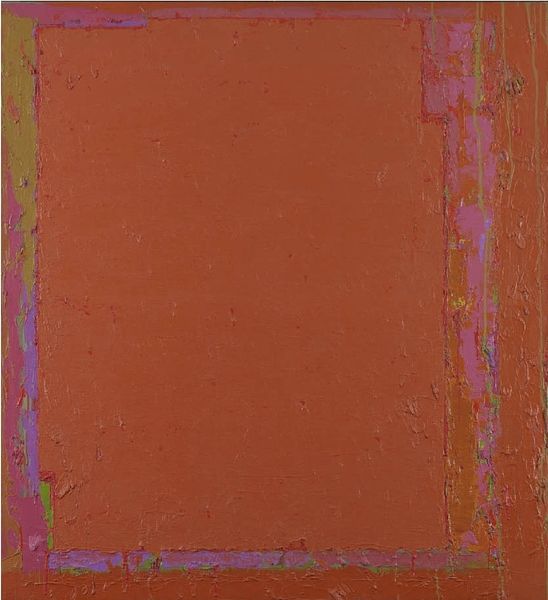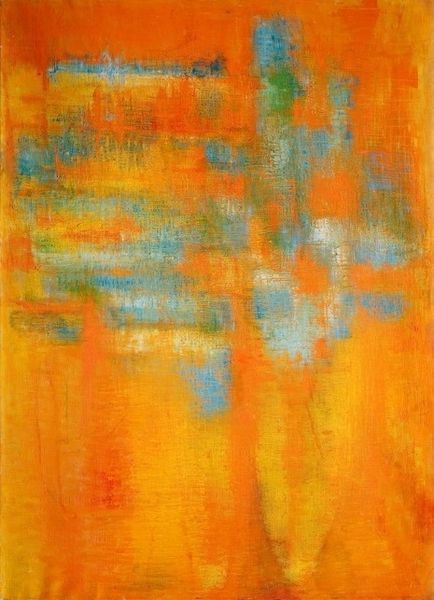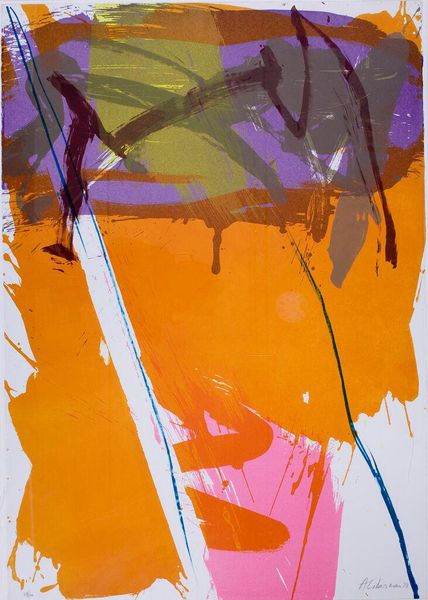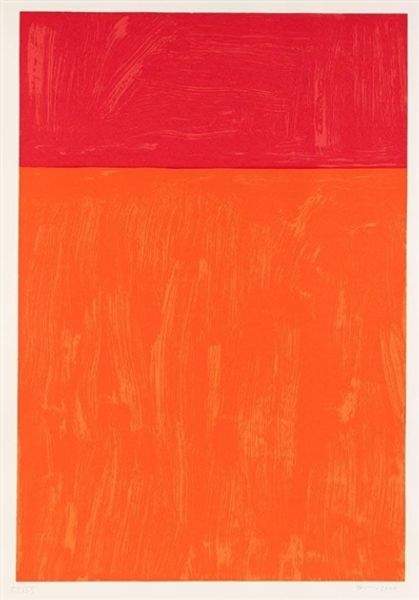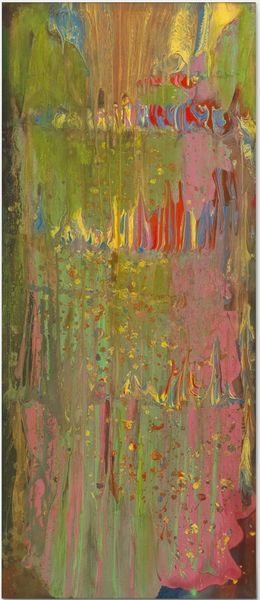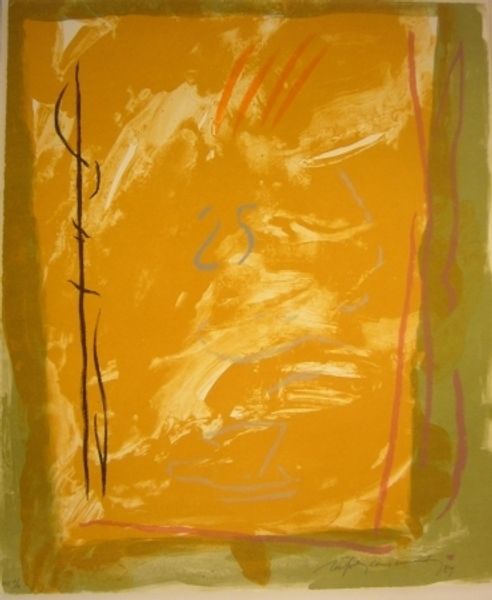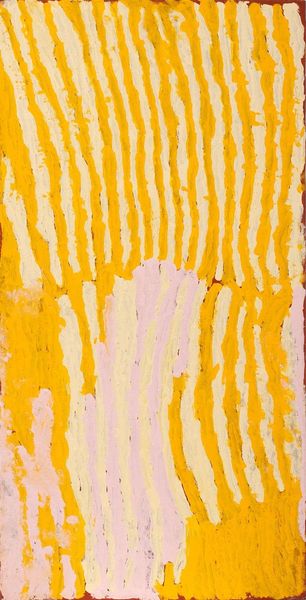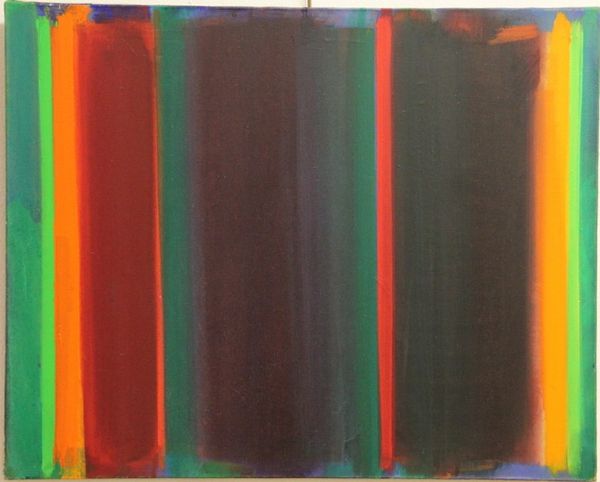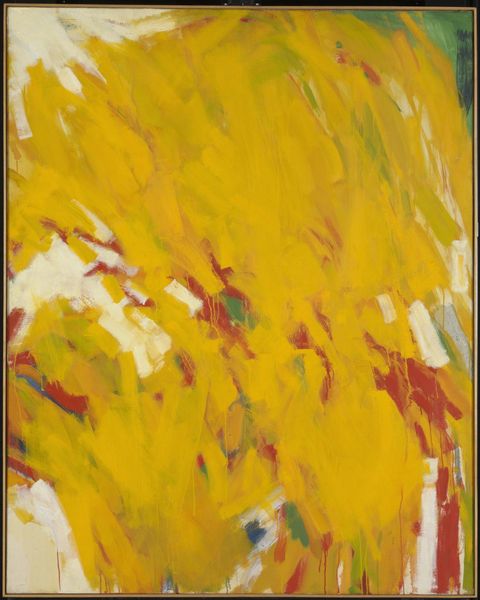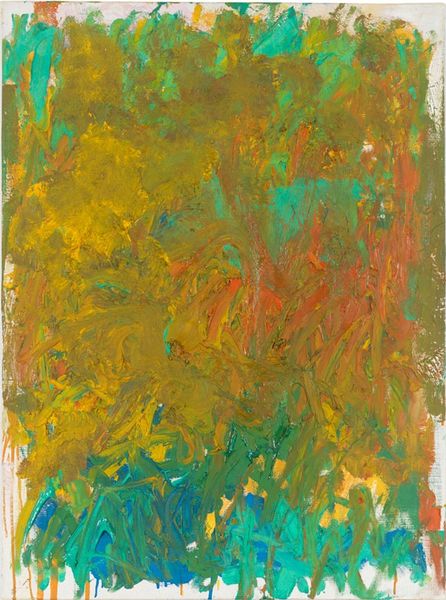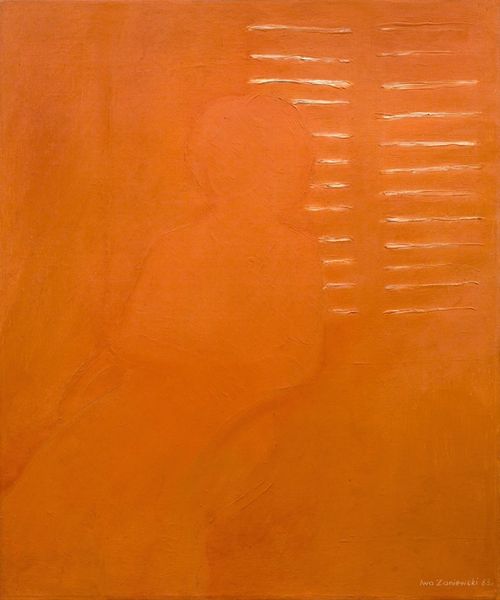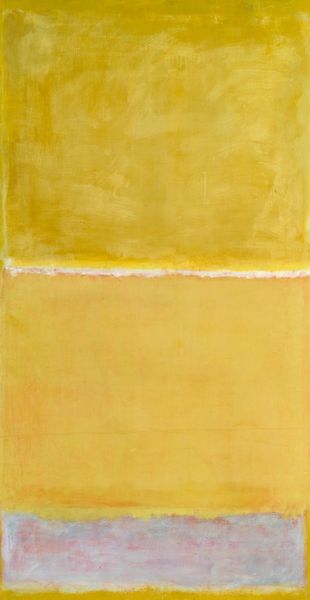
Copyright: John Hoyland,Fair Use
Editor: So, here we have John Hoyland's "22.8.74," created in 1974, using acrylic on canvas. The horizontal bands of green, layered over warm orange, really give it a strong visual texture, and the bold border emphasizes the flatness. It's abstract, obviously. What do you see in this piece, considering its place in art history? Curator: This work immediately situates itself within the historical trajectory of abstract expressionism, particularly its post-war engagement with flatness and color. It's important to remember that abstract expressionism, while seemingly apolitical, emerged within a very specific socio-political context, promoted in America partly as a signifier of freedom and individual expression, contrasting with socialist realism. Hoyland's approach, however, pushes further towards formal abstraction, almost deliberately purging recognizable references. Does this aesthetic choice perhaps imply a deliberate break from the heroic individualism often associated with American Abstract Expressionism? Editor: That's an interesting point about the implied political context. I hadn’t considered that this work might be responding to those established ideas. It definitely has a very different feel from a Pollock, say. Curator: Precisely. Think about the institutional support abstract expressionism enjoyed during the Cold War; museums became active sites in constructing a specific narrative around American art. How do you see Hoyland's work fitting into that narrative or challenging it? Editor: I guess its abstraction takes the focus away from those kind of political readings. The very lack of any kind of narrative almost neutralizes it, maybe? Curator: Perhaps. And that's where its interest lies: the act of reducing art to almost pure form becomes its own kind of statement, questioning the assumed role of art as a vehicle for ideology, intentionally or otherwise. Editor: I never thought about abstract art as potentially being a critique of itself, in a way. Curator: It’s that awareness of the institutional and socio-political forces surrounding art production that enriches our understanding and allows for nuanced interpretations of even seemingly "purely" formalist works like this. Editor: That's really shifted my perspective. It gives a depth to abstraction I hadn't really grasped before.
Comments
No comments
Be the first to comment and join the conversation on the ultimate creative platform.
